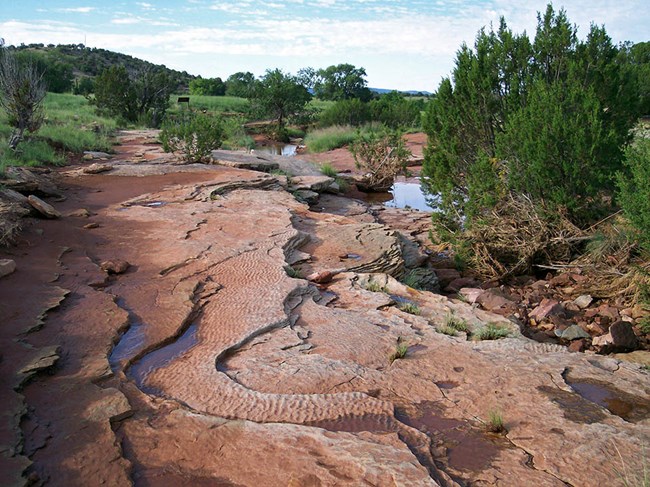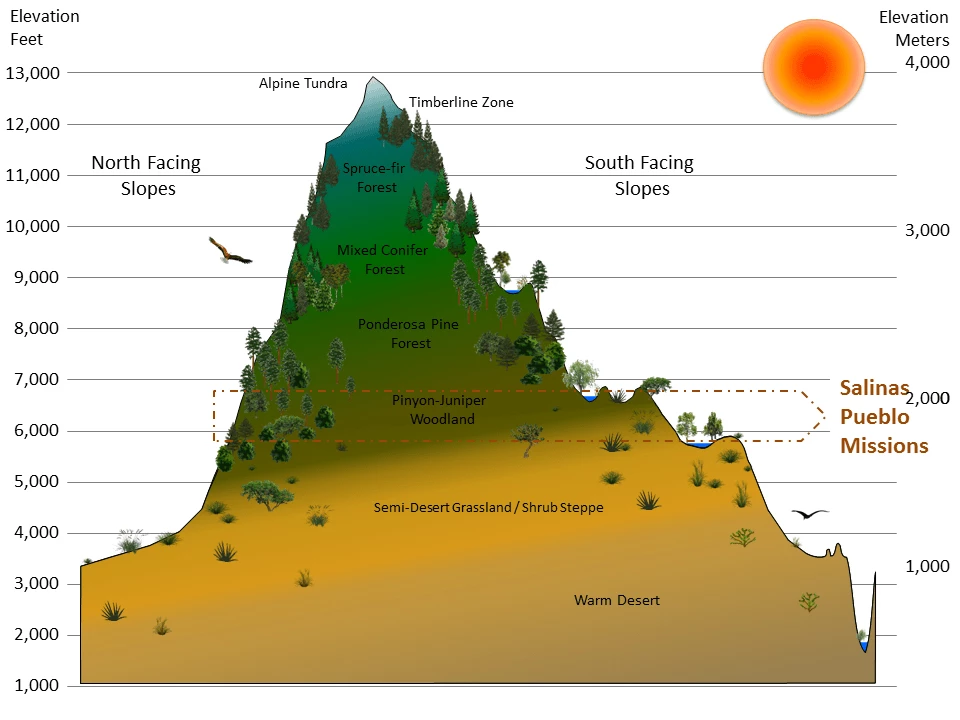
NPS / SCPN
Salinas Pueblo Missions National Monument is comprised of 3 units – Abó, Quarai, and Gran Quivira – and encompasses 1063 acres (430 ha) in central New Mexico. It was originally established as Gran Quivira National Monument in 1909 to protect cultural resources associated with the prehistoric Indian pueblos and Franciscan mission ruins. In 1980, the monument was combined with two New Mexico state monuments.
The units of Salinas Pueblo are situated within Estancia Basin at the southeast foothills of the Manzano Mountains. The terrain, cut with canyons and rocky outcrops, is fairly steep and rugged.
No water resources exist within the Gran Quivira unit of the Monument, but the Abó unit has two drainages with at least two pools that hold water year-round. The Quarai unit has one wash and two springs, which provides water for a more diverse vegetation community than the other two units. Vegetation at Salinas Pueblo NM is predominantly pinyon-juniper woodland and associated desert shrubland. Lack of water in large areas of the monument depresses faunal diversity, which includes 2 amphibian, 99 bird, and 19 mammal species.
Select a Park:
Select a Species Category (optional):
Visit NPSpecies for more comprehensive information and advanced search capability. Have a suggestion or comment on this list? Let us know.
Life Zones
Salinas Pueblo Missions ranges in elevation range from 5,953 to 6,750 feet (1,815–2,058 m) and spans the Semi-Desert Grassland/Shrub Steppe and Pinyon-Juniper Woodland life zones. The monument experiences an average annual precipitation of 14.3 inches (362 mm).

Climate Summary Chart
Charts are an effective way to summarize and graphically represent climate variables. The following chart is based on the diagrams developed for vegetation studies by Walter and Lieth in 1967. Visit our climate page for more information.

Reports & Publications
Inventories are point-in-time surveys that help us learn about the resources in our parks. Information obtained through the Southern Colorado Plateau Network’s inventories of park resources helped to establish a base level of data, which has served as a starting point for our natural resource monitoring.
Source: NPS DataStore Saved Search 3515 (results presented are a subset). To search for additional information, visit the NPS DataStore.
Source: NPS DataStore Saved Search 3471 (results presented are a subset). To search for additional information, visit the NPS DataStore.
Source: NPS DataStore Saved Search 3280 (results presented are a subset). To search for additional information, visit the NPS DataStore.
Last updated: November 6, 2018
